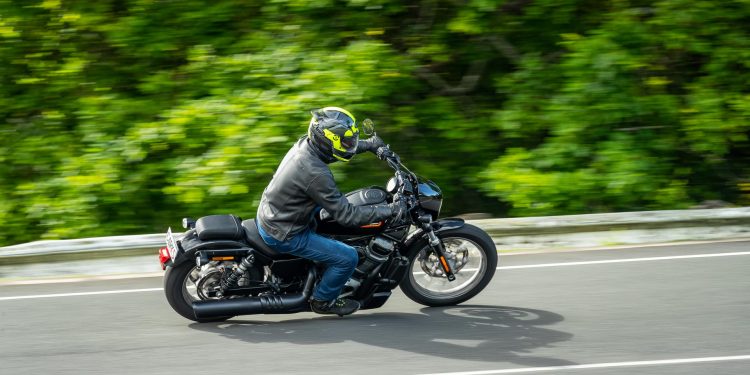2023 Harley-Davidson Nightster S 975 review
Words: Peter Louisson | Photos: Isaac Western
Nightster is the second Harley of the modern Sportster range, with a 975cc V-twin. Is it a Sportster 1250 alternative?
The Nightster is back, Harley reusing a name that was last heard of in 2007. This bike is rather more sophisticated though, and sassier too.
Like its bigger Harley-Davidson 1250 Sportster S sib that was released a couple of years ago, this was designed with the engine as a stressed member to reduce weight.
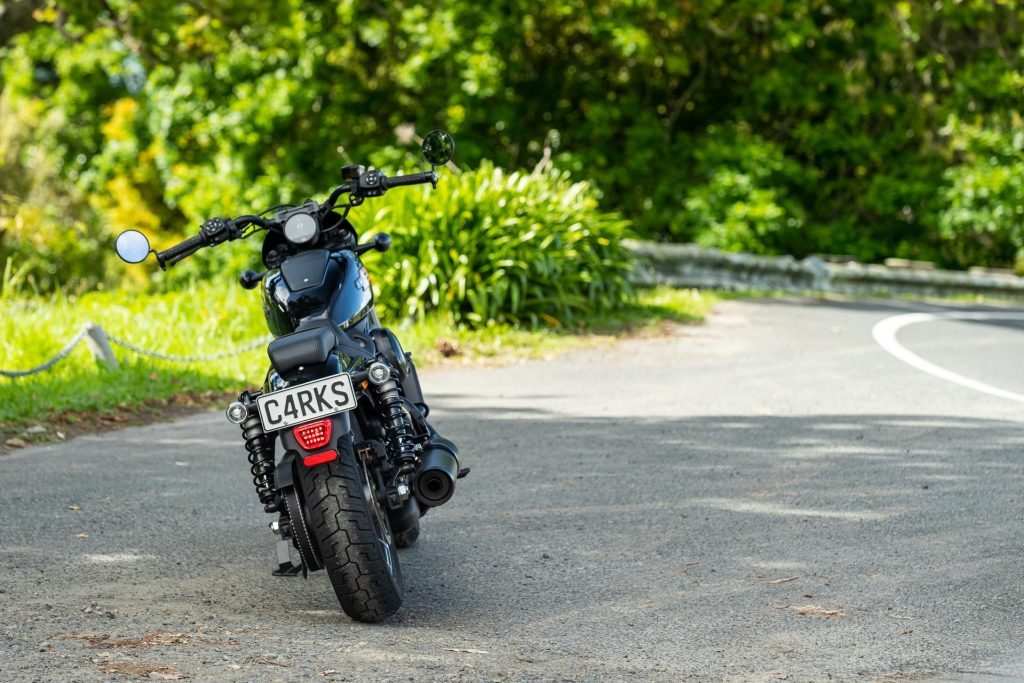
However, it uses a smaller Revolution Max 975cc engine, a liquid-cooled V-twin with variable valve timing good for 67kW at 7500rpm and 95Nm of torque at 5000rpm. Overall it weighs 225kg full, pretty lightweight for an H-D.
This too features ride-by-wire throttle and three ride modes (Sport, Road, Rain), LED lighting, a six-speed transmission, traction and cruise control systems, a slipper clutch and tyre pressure monitoring.
Where the Sportster 1250 has big bulbous tyres, this has a 100/90-19 up front and a 150/80-16. Other differences include a round headlight instead of an oblong one, and a single black pipe out the right side versus a two into two stacked pipe on the bigger bike.
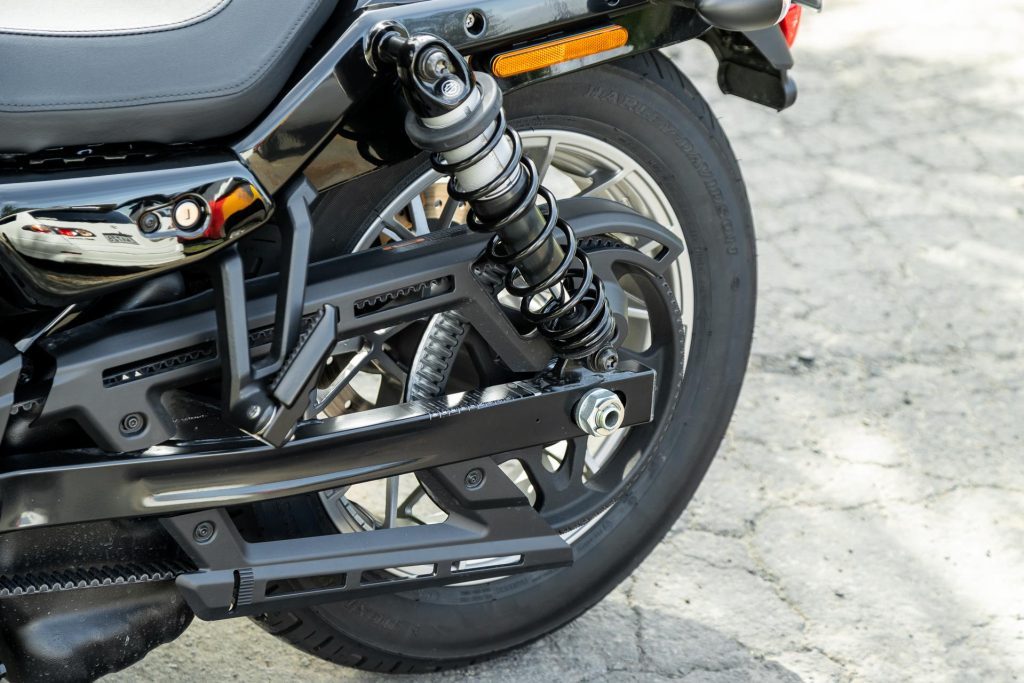
The footpegs are mid-mounted on this too, whereas they are set further forward on the 1250, making a significant difference to ride quality.
This has a small bug screen and also a pillion seat and pegs, unlike the 1250. The faux tank is a little more peanut shaped on the Nightster. But the underseat fuel holder is tiny at 11.7L, enough for around 210km of range according to the trip computer.
This then is the second ‘cruiser’ in the Revolution Max family and can genuinely be thought of as Sportster lite.
Calling it a cruiser is accurate enough, aesthetically, but its agility and speed are distinctly not. On this, you kind of find yourself going hard without the bike even noticing.
With such effortless torque – it pulls like mad once into its VVT zone at around 4000rpm – roll ons in top are too easy. It’s tall geared too, 100km/h corresponding to 3400rpm, so inadvertent overspeed is certainly possible.
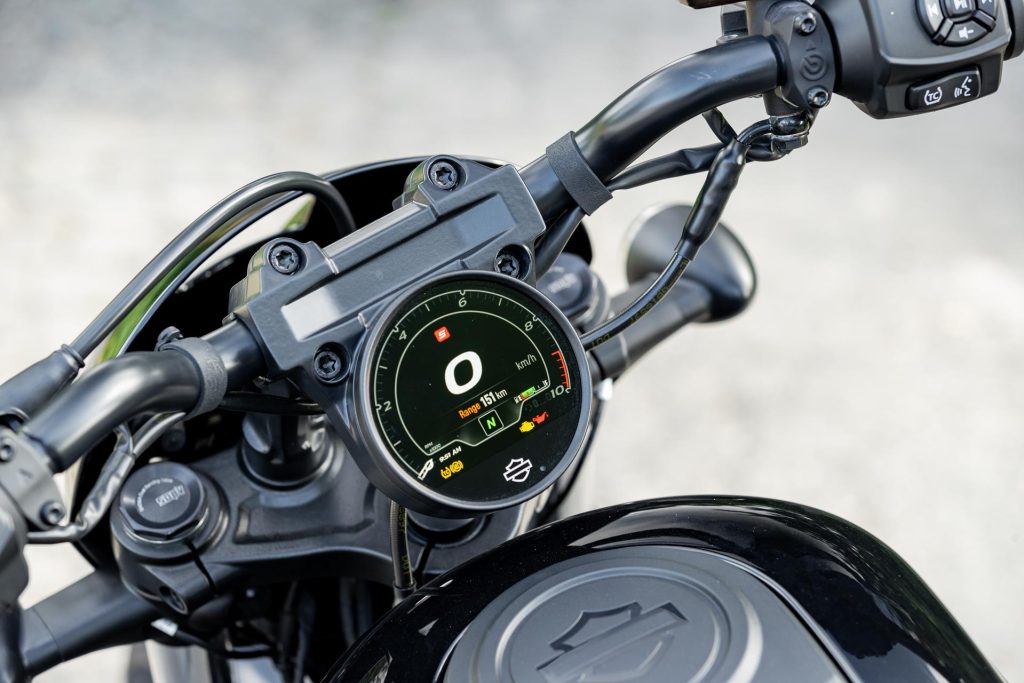
Honestly Officer. At 4000rpm it’s doing 120km/h, and it feels effortless at 110.
The torque of this is pretty addictive. While there’s no real point easing below 2000rpm, from about 2500rpm the engine is responsive and from 3000rpm onwards it feels good.
There’s a flat spot of hesitation before 4000rpm but then urge builds in a progressive manner and it revs to around 9000rpm. On road you will probably be using 4000-6500rpm typically.
The exhaust note is cool too, almost Euro V-twin in nature.
This Sportster surprises with its acceleration, though it really shouldn’t, being a close relative to the rocket-like 1250 Sportster. Performance figures were under a second down on its bigger sib’s (0-100 of 3.86sec, 80-120 in 2.30sec).
It feels quick and would probably be even faster if the gearbox was a little more cooperative; as it is, the shifts aren’t well communicated and don’t always snick through at high revs.
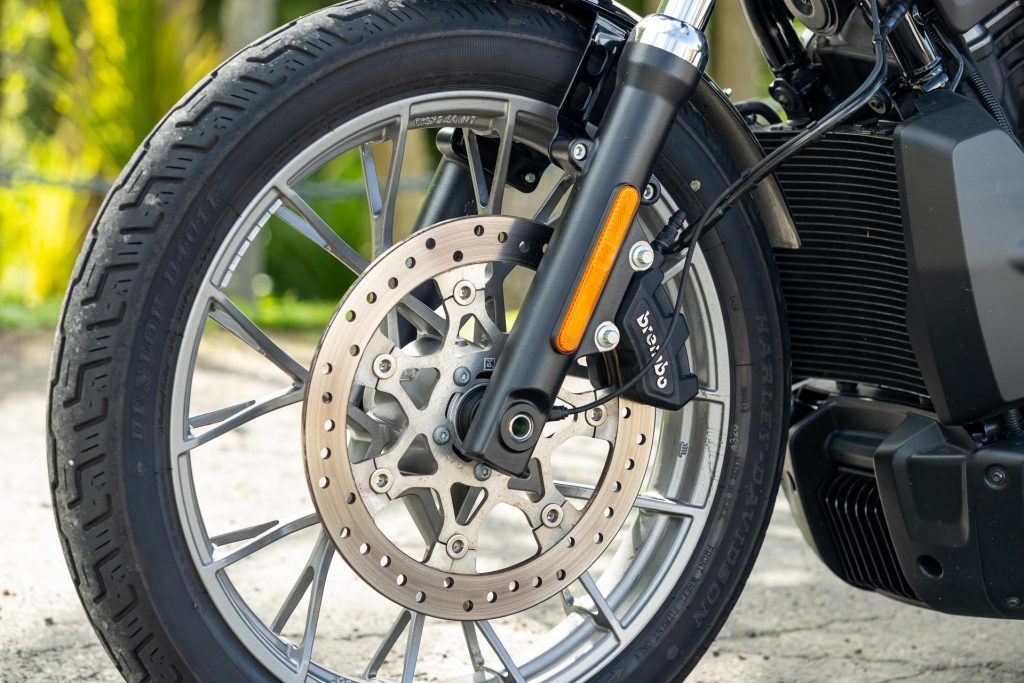
Brakes comprise a single axial-mount disc with a four-piston caliper up front and single-piston caliper on the back.
Alone the front is okay but together with the rear brake the best 100-0 stoppie measured 38.46m, which is decent enough. There’s useful engine braking too.
The handling is one of the standout features of this machine. The Sportster evidently has max lean angles of 35 degrees, whereas this is 32 degrees each side.
However, ours had no hero lugs attached to the underside of the footpegs, meaning it was a bit closer to the Sportster’s 35 degrees of lean.
Touchdown is certainly possible, but on our ride loop it only happened a handful or times, a few on each side. So it is quick and agile enough for rides out with mates on sports bikes.
At pick up, the rear suspension was set for a 100kg rider so we dialed preload back some. Much better ride comfort was the result. Stability in turns was never in doubt.
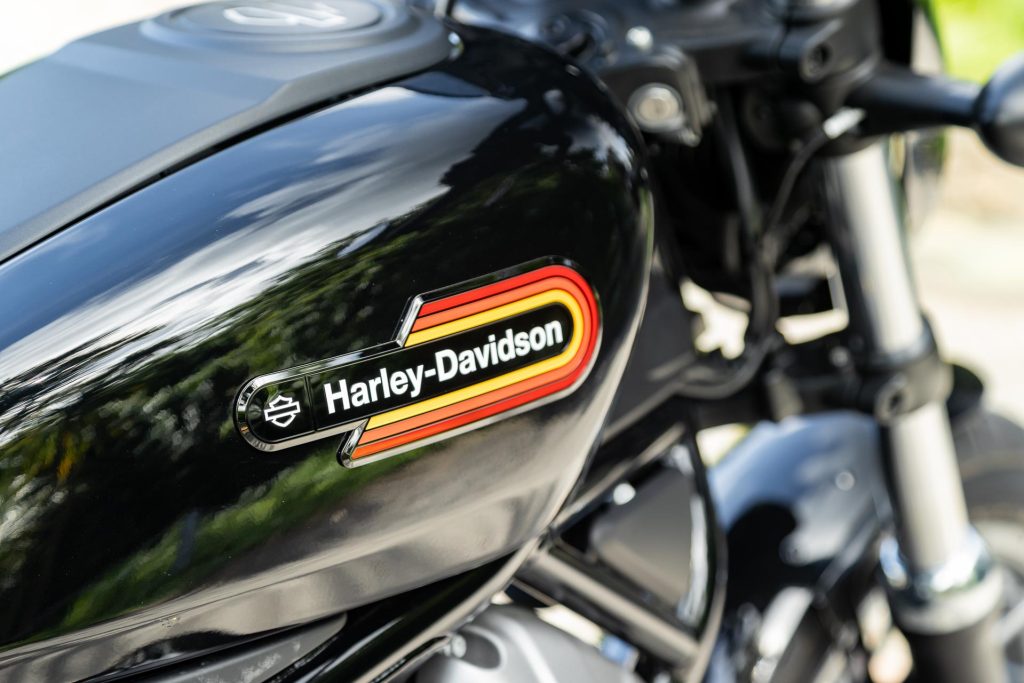
Unlike the Sportster, the forks are unadjustable. Short sharp bumps can catch it out but on smoother roads the ride quality is fine, better than the Sportster because of added rear wheel travel (76 vs 53mm) and the mid-mount pegs.
Initially it seems like a bit of a stretch to the bars but at 100km/h the riding position makes more sense; you don’t turn into a wind sock like you can on some naked machines.
Where I found myself tiring on the Sportster after about 100km, this was better. The Sportster is fairly full on, almost like a drag bike, whereas this is not quite as single purpose; it feels to have a better balance of sport and cruiser characteristics.
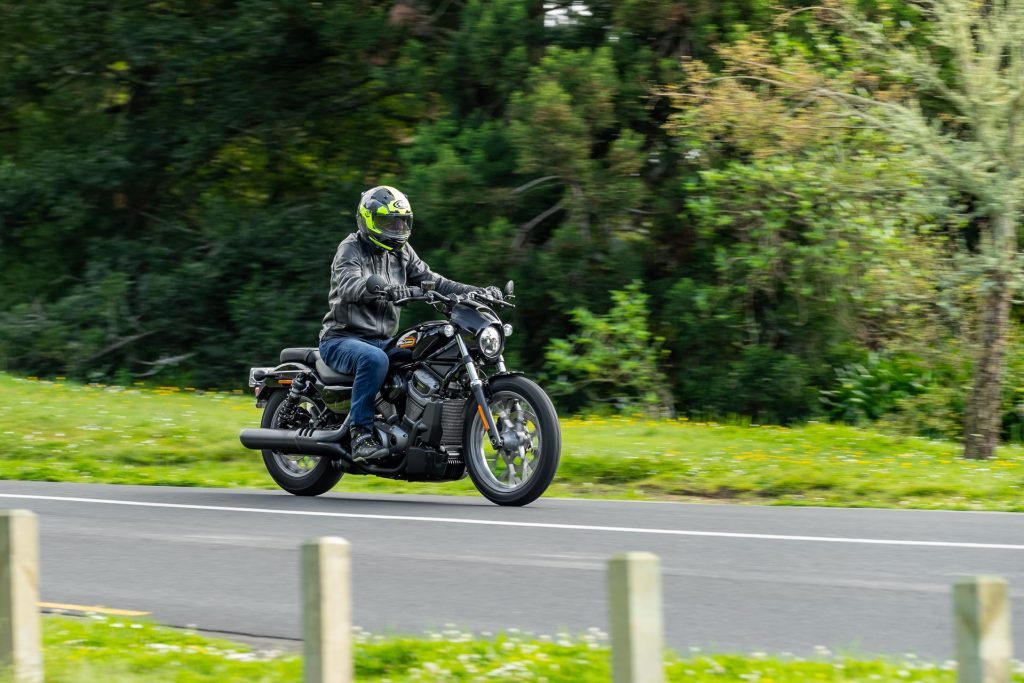
While some of the components (suspension and brakes) aren’t quite the same quality of those on the 1250, it doesn’t detract from the ride experience.
Overall, we’d rate this higher because it has fewer weaknesses. And the entry point to Nightster is lower ($22,995 ride away).
That puts it in the crosshairs of the Honda Rebel 1100 and Indian Scout.
| Model | Harley-Davidson Nightster S 975 |
| Price | $22,995 |
| Format | Liquid-cooled / fuel-injected / V2 |
| Engine | 975cc |
| Max Power | 67 kW @ 7500 rpm |
| Max Torque | 95 Nm @ 5000 rpm |
| Cylinder Head | DOHC / 8v |
| Gearbox | 6-speed |
| Drivetrain | Belt final drive |
| Front Suspension | 41mm forks, unadjustable |
| Rear Suspension | Twin shocks, preload adjustable |
| Front Brakes | Four-piston calipers, 320mm disc |
| Rear Brakes | Single-piston calipers, 260mm disc |
| Safety Systems | ABS, TC |
| Tyre Size | F – 100/90ZR19 / R – 150/80ZR16 |
| Tyres | Dunlop Harley-Davidson |
| Wheelbase | 1556mm |
| Seat Height | 705mm |
| Rake/Trail | 30 degrees / 137mm |
| Fuel Capacity | 11.7 L |
| Measured Weight | 223 kg |
| Weight Distribution | F – 104 kg / R – 119 kg |
This story first appeared in the February 2024 issue of NZ Autocar magazine.


